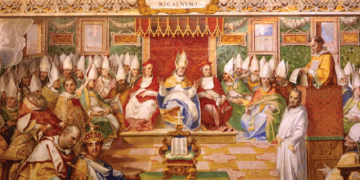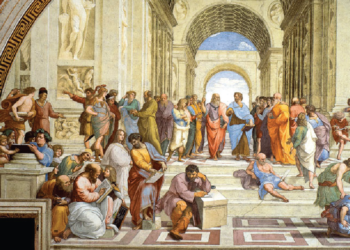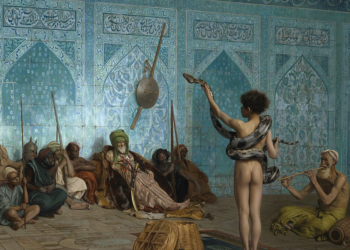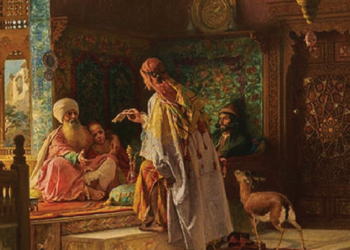The History of Gold
1) Gold in Ancient India
Gold has held a significant place in the history of India, dating back to ancient times. In the subcontinent, gold’s allure extended far beyond its monetary value; it was deeply intertwined with the cultural and social fabric of society. During the Indus Valley Civilization, which thrived around 3300 to 1300 BCE, gold artifacts were crafted with intricate designs, reflecting the craftsmanship of the era. Gold jewellery and ornaments were not just symbols of wealth but also held spiritual and religious significance. Ancient texts like the Vedas and Upanishads mention gold as a symbol of purity and prosperity, further elevating its social value.
The presence of gold coins in various historical periods attests to its role as a medium of exchange. Dynasties like the Gupta, Chola, and Mughal minted their gold coins, underlining gold’s vital role in trade and economics. The concept of wealth in ancient India extended beyond material riches; gold was seen as a representation of divine blessings. Temples were adorned with gold, often used to create intricate idols and decorative elements. Donating gold to temples and spiritual leaders became a way for individuals and rulers to display their devotion and gain societal respect.
Gold’s significance in ancient India wasn’t confined to economic and cultural aspects alone; it also held political importance. Rulers often amassed gold reserves, both for their aesthetic appeal and as a symbol of power. The possession of vast gold reserves enabled monarchs to demonstrate their authority and strengthen diplomatic ties. Gold diplomacy played a role in foreign relations, where gifts of gold were exchanged between rulers of different kingdoms. These offerings not only solidified alliances but also showcased the donor’s opulence and intention to maintain friendly ties.
Foreign trade greatly influenced India’s gold history. The country’s rich gold resources attracted traders from around the world. The Silk Road, connecting India to Central Asia, allowed the exchange of not only goods but also cultural ideas and technologies. India’s mastery in gold craftsmanship led to a high demand for its jewellery, artifacts, and coins. This trade not only contributed to the economic prosperity of the region but also fostered cross-cultural interactions.
2) Gold in Ancient Babylonia
In the ancient land of Babylonia, gold played a pivotal role that echoed across various aspects of society. Renowned for its advanced civilization and contributions to human progress, Babylonia’s history with gold is a testament to its multifaceted significance. Monetary value was just one facet of gold’s importance; its social, political, and trade-related implications were equally profound.
Gold, in Babylonia, served as a medium of exchange, facilitating trade and economic transactions. The city of Babylon was a bustling hub of commerce, where merchants from different corners of the ancient world converged to exchange goods and ideas. Gold’s portability, divisibility, and rarity made it an ideal form of currency, and Babylonian traders engaged in both domestic and international trade using gold coins. These coins, adorned with intricate designs and inscriptions, not only streamlined economic activities but also showcased the artistic prowess of the civilization.
The allure of gold extended beyond its monetary value; it held immense social significance. Gold jewellery, ornaments, and artifacts were adorned by the wealthy and elite as symbols of status and luxury. Kings and nobles often displayed their power by wearing elaborate gold accessories, emphasizing their high social standing. Additionally, gold was used to craft intricate objects of religious and cultural importance. Temples and palaces were adorned with gold, not only for aesthetic reasons but also to demonstrate divine connections and foster a sense of awe among the populace.
In the realm of politics, gold played a crucial role in shaping alliances and diplomacy. Babylon’s strategic location at the crossroads of trade routes made it a desirable ally for neighbouring kingdoms. Gold was exchanged as gifts between rulers, symbolizing goodwill and cooperation. These diplomatic gestures helped forge alliances, ensuring mutual protection and economic benefits. The possession of gold reserves also enhanced Babylonia’s influence on the global stage, allowing it to exert control over trade routes and shape regional dynamics.
Foreign trade was a cornerstone of Babylonia’s gold history. The civilization’s central position in the ancient trade network made it a melting pot of cultures and ideas. Gold was not only acquired through mining but also acquired through trade with distant lands. Luxurious goods and precious metals flowed into Babylonia from regions as far as Egypt and the Indus Valley. This exchange of commodities facilitated the spread of knowledge, artistic styles, and technologies, enriching Babylonia’s cultural tapestry.
3) Gold in Ancient Greece
In the annals of ancient history, Greece emerges as a realm where gold held not only economic value but also a profound cultural, social, and political significance. The role of gold in ancient Greece is a story of how this precious metal transcended its monetary function to become an integral part of Greek civilization’s fabric.
Monetary value was undoubtedly a crucial aspect of gold’s importance in ancient Greece. The Greeks minted their own gold coins, with each city-state producing its distinctive designs. These coins, often adorned with symbols and images of gods and heroes, not only facilitated trade but also showcased the city’s artistic and cultural identity. The use of gold coins extended beyond trade; they were often employed to honor athletes in the Olympic Games, exemplifying gold’s role in commemorating significant achievements.
However, the allure of gold extended far beyond its use in transactions. Gold was intricately intertwined with Greek mythology and religion. The Greeks associated gold with the divine and the immortal. This can be seen in their depictions of gods and goddesses, who were often adorned with gold jewelry and ornaments in sculptures and paintings. Gold offerings were also made at temples to appease the gods and seek their favor. The famed Statue of Zeus at Olympia was crafted with gold and ivory, showcasing the Greeks’ devotion to their pantheon.
In the realm of social value, gold played a crucial role in defining status and wealth. The aristocracy of ancient Greece adorned themselves with gold jewelry, not merely as a display of opulence but as a marker of their elevated position in society. Gold crowns, necklaces, and brooches were worn as symbols of power, authority, and nobility. These ornaments weren’t just decorative; they conveyed the wearer’s prestige and influence, reinforcing the societal hierarchy.
Gold also found its way into politics and foreign trade in ancient Greece. The minting of gold coins was a means for city-states to assert their sovereignty and advertise their cultural identity to other regions. The Delian League, an alliance of Greek city-states, utilized a common currency system, further underscoring gold’s role in fostering political unity. Gold’s scarcity made it a valuable asset for foreign relations. The exchange of gold gifts between city-states or foreign rulers was a diplomatic practice that aimed to establish alliances and strengthen ties.
Foreign trade was instrumental in shaping Greece’s relationship with gold. The Greeks imported gold from regions such as Egypt and the Middle East, contributing to their gold reserves. Trade routes like the Silk Road allowed the Greeks to access exotic goods, including gold, which in turn influenced their artistic styles and cultural expressions. The acquisition of gold through trade bolstered Greece’s position as a cultural and economic hub.
4) Gold in Ancient Rome
The history of gold in ancient Rome unfolds as a narrative of economic prowess, social distinction, political symbolism, and a reflection of the empire’s far-reaching influence. Beyond its role as a medium of exchange, gold became emblematic of Rome’s grandeur and intricate societal dynamics.
In the realm of economics, gold held substantial monetary value in ancient Rome. The Romans utilized gold coins, such as the aureus and solidus, for trade and transactions. These coins bore the likenesses of emperors and allegorical representations, communicating both power and imperial legitimacy. The stable currency system facilitated economic interactions within the vast expanse of the Roman Empire, enabling commerce and contributing to the empire’s prosperity.
However, the allure of gold transcended its economic use. Gold was embraced as a marker of social status and distinction. Elaborate gold jewelry, intricate crowns, and exquisite accessories adorned the elite, differentiating them from the common populace. The Roman fascination with gold extended to architectural ornamentation, as opulent buildings and structures were often embellished with gold leaf, reflecting the city’s magnificence.
The link between gold and politics was unmistakable in ancient Rome. Emperors utilized gold imagery to strengthen their authority and assert their dominance. The minting of gold coins bearing the emperor’s likeness served as a tangible representation of imperial power. These coins were distributed throughout the empire, reinforcing the emperor’s presence even in the farthest reaches. Moreover, gold was bestowed upon military commanders and allies as a sign of appreciation and loyalty, forging alliances and securing political allegiance.
Religious and cultural dimensions further enriched gold’s significance. Temples and shrines were adorned with gold decorations and offerings, underscoring the Romans’ devotion to their pantheon of deities. The opulence of these religious sites not only celebrated the gods but also showcased Rome’s affluence. Gold was also used to craft intricate artifacts, such as ceremonial objects and sculptures, attesting to the Romans’ artistic mastery.
Foreign trade played a pivotal role in Rome’s gold history. The conquest of distant lands brought wealth and resources into the empire, including gold. The Silk Road and maritime routes facilitated the exchange of gold along with other valuable goods, fostering cultural interchange and economic growth. The acquisition of gold from Egypt, Spain, and other regions enriched Rome’s coffers and contributed to its reputation as a dominant global power.
5) Gold in Muslim Golden Age
The Muslim Golden Age, spanning from the 8th to the 13th century, was a remarkable era of scientific, cultural, and intellectual advancement across the Islamic world. Within this era, gold played a multifaceted role that went beyond its monetary value, encompassing scientific progress, cultural expression, and trade relations.
Monetary value was a crucial aspect of gold during the Muslim Golden Age. The Islamic Caliphates minted gold coins known as dinars, which became renowned for their uniformity and quality. These coins facilitated trade and economic activities, as the Islamic world stretched from Spain to India, creating an extensive commercial network. The stability and reliability of the gold dinar contributed to the growth of prosperous cities and the flourishing of trade routes.
However, gold’s significance during this period extended beyond commerce. The Islamic Golden Age was characterized by profound advancements in various fields, including astronomy, mathematics, medicine, and philosophy. Gold was employed in scientific instruments, such as astrolabes, which were used for navigation and astronomical observations. Alchemists of the era, influenced by Greek and Persian knowledge, worked with gold and other materials in their pursuits of transmutation and medicinal applications.
Culturally, gold found expression in the intricate designs of Islamic art and architecture. The use of gold leaf and intricate geometric patterns adorned palaces, mosques, and manuscripts. Calligraphy, a revered art form in the Islamic world, was often embellished with gold, creating beautifully illuminated manuscripts. The craftsmanship demonstrated in gold-embellished objects reflected the Islamic world’s appreciation for beauty and aesthetics.
Gold’s role in politics and foreign trade was also notable. The Islamic Caliphates were involved in extensive trade networks that connected the East and West. The exchange of goods, including gold, contributed to the flourishing of cities like Baghdad, Cordoba, and Cairo. These cities became centers of learning, culture, and economic activity. Gold diplomacy was also prevalent, with gifts of gold exchanged between rulers to foster alliances and strengthen diplomatic ties.
The relationship between gold and knowledge during the Muslim Golden Age is intriguing. The House of Wisdom in Baghdad, established by the Abbasid Caliphate, was a center of scholarship that translated and preserved works from various civilizations, including Greek, Indian, and Persian. The manuscripts were often transcribed on paper with gold ink, symbolizing the value placed on knowledge. This exchange of ideas laid the foundation for the Renaissance and contributed to the preservation of classical knowledge.
6) Gold in the Renaissance
The Renaissance, a period of profound cultural and artistic revival spanning from the 14th to the 17th century in Europe, witnessed gold playing a pivotal role that encompassed economic growth, artistic expression, and political symbolism. The multifaceted significance of gold during the Renaissance era reflects its intersection with various aspects of society.
Economically, gold continued to serve as a medium of exchange, but its role was also expanding. The flourishing of trade and commerce during the Renaissance led to increased demand for gold coins, which were essential for conducting business across borders. Gold’s rarity and stability made it a preferred store of value for merchants and individuals alike. Furthermore, the exploration of the New World brought an influx of gold into Europe, stimulating economic activity and influencing the development of modern banking and financial systems.
Artistically, the Renaissance was marked by a renewed appreciation for classical aesthetics and a focus on humanism. Gold leaf and gilding were extensively used in artworks, enhancing the visual impact and conveying a sense of opulence. The technique of chiaroscuro, which utilized contrasts of light and shadow to create depth and volume, was often applied to gold-embellished paintings. Gold was also employed in the illumination of manuscripts and the decoration of religious artifacts, reflecting the spiritual reverence and artistic innovation of the period.
The relationship between gold and politics during the Renaissance was complex. Rulers and monarchs used gold as a symbol of their authority and status. Crowns, sceptres, and other regal paraphernalia were often crafted with gold and precious gemstones, exemplifying the power of the ruling elite. Gold coinage, bearing the portrait of the ruler, reinforced their image and control over the realm. Additionally, gold diplomacy remained relevant, as monarchs exchanged gifts of gold to strengthen alliances and establish international prestige.
Gold’s role in foreign trade expanded during the Renaissance, with the establishment of maritime routes connecting Europe with distant lands. The exploration and colonization of the Americas brought a significant influx of gold into Europe. Spain, in particular, benefited from the vast gold reserves discovered in the New World. However, this newfound wealth also led to economic challenges, including inflation and changes in the balance of trade.
Gold’s presence during the Renaissance era is also evident in the realm of science and exploration. The accurate measurement of longitude at sea, a critical navigational challenge, required precision instruments that often incorporated gold. Additionally, the alchemical pursuits of the time involved experimentation with gold compounds and the transmutation of base metals into gold, although these endeavors were more symbolic than practical.
7) Gold in the Industrial Revolution
The Industrial Revolution, a transformative period from the late 18th to the mid-19th century, marked a shift from agrarian economies to industrialized societies. During this time, gold played a significant role that extended beyond its traditional functions, reflecting its impact on emerging economic systems, technological innovations, and global trade.
While gold maintained its status as a store of value and medium of exchange, the changing economic landscape of the Industrial Revolution brought new dimensions to its role. As economies shifted towards industrial production and urbanization, gold was increasingly sought after for investment purposes. The stability of gold made it an attractive asset in times of economic uncertainty, and individuals and institutions began to accumulate gold as a hedge against financial instability.
Technological advancements during the Industrial Revolution influenced gold mining and refining processes. Innovations such as the steam engine and improved machinery enhanced the efficiency of gold extraction from mines. Gold’s significance as a valuable resource led to the development of more sophisticated techniques, which not only increased the quantity of gold extracted but also contributed to the growth of mining communities and the expansion of mining operations globally.
Gold’s relation to global trade evolved during this era. The growth of industry and international trade networks led to increased demand for gold as a form of payment for goods and services. Gold’s universal value made it a preferred medium for settling transactions, particularly in international trade where different currencies posed challenges. The gold standard, wherein paper money was directly tied to a specific amount of gold, emerged as a way to stabilize currencies and facilitate global trade.
The allure of gold extended beyond practical and economic aspects; it maintained its cultural and artistic significance. The Industrial Revolution saw a rise in craftsmanship and design, with gold being used in the creation of intricate jewelry, timepieces, and decorative items. The Arts and Crafts movement, a response to the mechanization of production, emphasised handcrafted quality and often incorporated gold in its designs, celebrating traditional craftsmanship.
Gold also influenced the development of financial systems during the Industrial Revolution. The adoption of the gold standard provided stability to currencies and facilitated international exchange. However, it also led to constraints on monetary policy, as the money supply was tied to the availability of gold reserves. The pursuit of a fixed gold standard ultimately influenced economic policies and the approach to monetary management in various countries.
8) Gold Now
In the contemporary context, gold continues to hold a multifaceted role that blends tradition, economics, technology, and global dynamics. While no longer tied to the gold standard as a global monetary system, gold remains a symbol of stability and a store of value. Investors often turn to gold as a safe-haven asset during times of economic uncertainty or market volatility, seeking its historical resilience in preserving wealth.
Technological advancements have revolutionized the way gold is accessed and traded. Digital platforms and financial instruments allow individuals to invest in gold without physically owning the metal. Exchange-traded funds (ETFs) and digital gold services offer convenient ways to gain exposure to gold’s price movements without the logistical challenges of storing physical gold. These innovations have democratized gold investment and expanded its accessibility.
Global trade and geopolitical dynamics continue to influence gold’s value. Fluctuations in currency values, trade tensions, and political uncertainties can impact gold prices as investors seek refuge in its perceived stability. Additionally, central banks of various countries still hold significant gold reserves as part of their foreign exchange reserves, underscoring gold’s enduring role as a strategic asset.
Culturally, gold remains a symbol of luxury, prestige, and craftsmanship. Fine jewellery, artworks, and luxury goods often incorporate gold for its aesthetic appeal and timeless value. Moreover, gold’s symbolic significance endures in cultural traditions and ceremonies, reflecting its enduring status as a precious and cherished element of human history.
In conclusion, gold’s role in the modern era encompasses economic, technological, and cultural dimensions. While its ties to monetary systems have evolved, its status as a safe-haven asset, technological innovation in trading, and cultural symbolism have kept gold relevant and valuable in a rapidly changing world.












